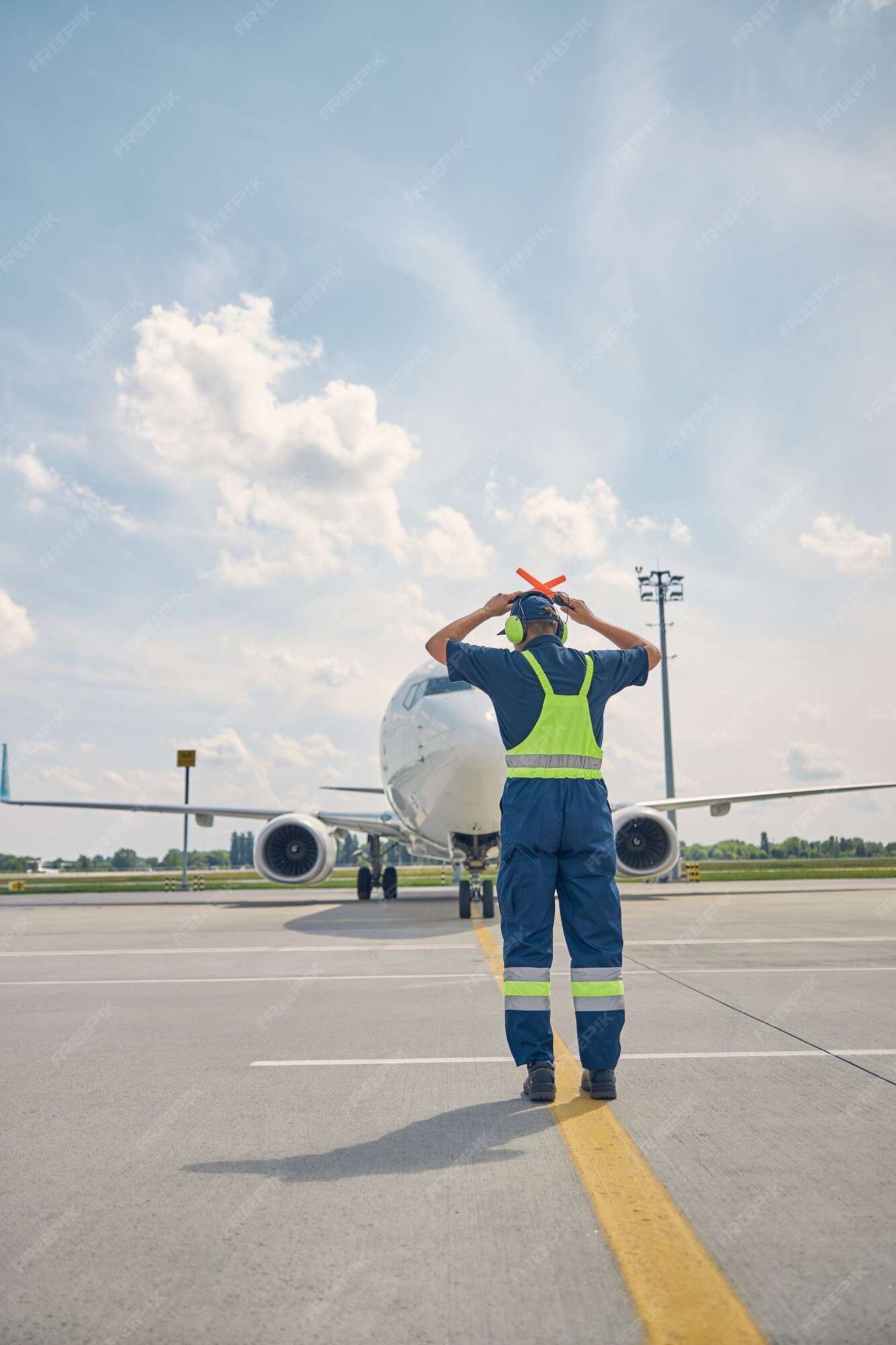Marshalling an Aircraft
Aircraft marshalling is a ground-based visual signaling system used at airports to assist in the safe movement and parking of aircraft on the ground. It involves trained personnel, known as aircraft marshals or aircraft marshalling officers, using a series of hand signals, illuminated wands, or other visual aids to communicate with pilots and guide them during various ground operations. Aircraft marshalling is particularly important in busy airport environments to ensure the safe and efficient movement of aircraft on the apron, taxiways, and runways. Here are some key aspects of aircraft marshalling:
1. Safety and Precision: Aircraft marshalling is critical for ensuring the safety of ground operations. It helps prevent collisions between aircraft and ground vehicles, as well as ensures that aircraft are positioned correctly on the apron or at the gate.
2. Marshalling Signals: Marshalling officers use standardized hand signals and gestures to communicate with pilots. These signals are universally recognized and include instructions for stopping, moving forward, turning, and aligning with the terminal or parking spot. Examples of common marshalling signals include extending one or both arms to indicate where the aircraft should move or using illuminated wands at night.
3. Communication: Effective communication between the marshalling officer and the flight crew is crucial. Pilots rely on the marshalling officer’s signals to maneuver the aircraft safely. Radios and headsets are often used for additional communication, especially in noisy or busy airport environments.
4. Training: Aircraft marshals undergo specialized training to learn the standard hand signals and procedures for different types of aircraft. They must also be familiar with airport layouts, markings, and signage.
5. Ground Operations: Aircraft marshalling is used for a variety of ground operations, including guiding aircraft to and from gates, positioning aircraft for takeoff, and assisting with pushback and engine start procedures.
6. Safety Equipment: Marshalling officers often wear high-visibility clothing and may use illuminated wands or lighted batons, especially when working at night or in low-visibility conditions.
7. Standardization: The International Civil Aviation Organization (ICAO) provides guidelines and standards for aircraft marshalling signals and procedures to ensure consistency and safety across the aviation industry.
8. Emergency Procedures: Marshalling officers are also trained in emergency procedures, such as guiding aircraft in the event of an emergency evacuation or assisting with emergency services during incidents on the ground.
Aircraft marshalling is a crucial element of ground operations at airports, and it plays a vital role in maintaining safety, preventing accidents, and ensuring the efficient flow of aircraft on the ground. It relies on well-trained personnel who use standardized signals and procedures to guide aircraft in a controlled and safe manner.

Sudhakar Pantula is a dedicated Safety Management enthusiast with a wealth of experience in implementing software solutions for HSE (Health, Safety, and Environment) projects. He holds certifications as a Lead Auditor in various ISO standards, including ISO 45001, ISO 14001, ISO 9001, ISO 27001, and SA 8000, showcasing his commitment to quality and safety.
His particular passion lies in Aviation Safety and Security, and he firmly believes in the potential of technology to mitigate risks in this domain. Armed with a degree in Industrial Engineering and boasting a remarkable 25-year career in IT spanning diverse industries, Sudhakar brings a wealth of experience to the table. His track record includes successful stints with start-ups, where he played pivotal roles in their growth and development.
With over a decade of expertise in designing and building enterprise solutions, Sudhakar also excels in crafting customized software tailored to specific industry needs. Sudhakar’s professional journey has spanned various industry sectors, including Petroleum, Heavy Industries, Oil & Gas, Steel, Mining, Banking, Insurance, and Power. Over the past decade, he has been primarily focused on implementing EHS (Environmental, Health, and Safety) systems, a role that has taken him to numerous countries, including the USA, UAE, Australia, Germany, Thailand, and Singapore. His dedication to safety, technology, and innovation continues to drive positive change across industries.

